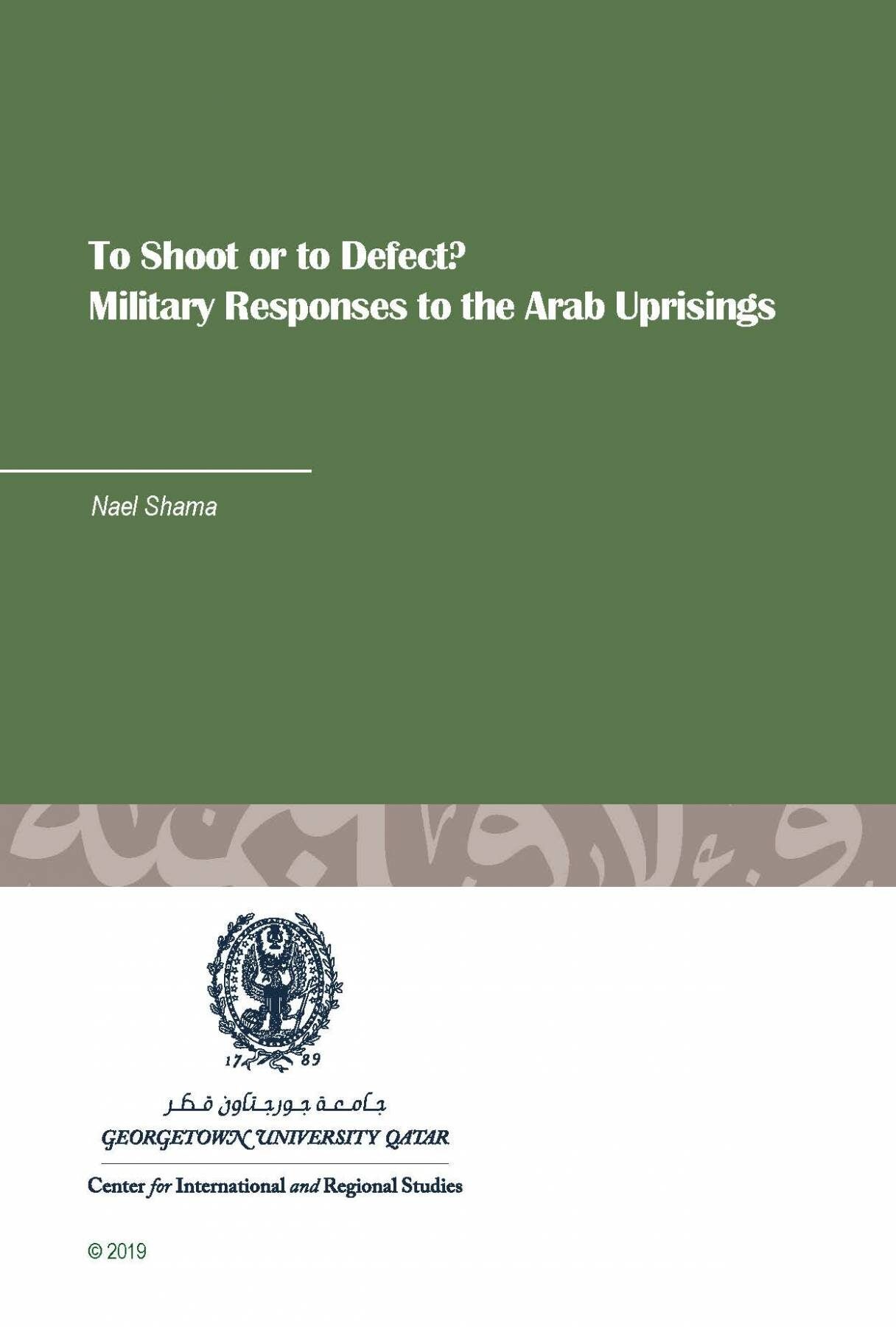To Shoot or to Defect? Military Responses to the Arab Uprisings

To cite this publication: Nael Shama, “To Shoot or to Defect? Military Responses to the Arab Uprisings,” CIRS Occasional Paper no. 22 (Doha, Qatar: Center for International and Regional Studies, 2019).
By examining the events of the Arab uprisings, this paper looks into the nature and dynamics of armies’ responses to popular uprisings. It argues that the outcome of the massive, regime-threatening Arab revolts in 2011 can be assessed by how a military responded to protests: did the army shoot protesters, did it stay idle, or did it largely defect? In light of the rich literature available on the historical experience of the “Arab Spring,” this paper shows that an army’s response to end popular uprisings in authoritarian regimes is determined by several key factors: the military’s level of institutionalization; its relationship to the regime; the degree of the regime’s legitimacy; the amount of international aid it receives; the prospects of foreign intervention; and, finally, the strength of the army’s bond with society and its perception of its own role within society. Additionally, there is a factor often overlooked by scholars; namely, how the military assesses a regime’s capacity to solve the crisis in order to triumph. The paper draws on evidence from the six cases of the 2011 Arab Spring—Egypt, Syria, Bahrain, Yemen, Libya, and Tunisia—to illustrate the dynamics of troop loyalty or defection.